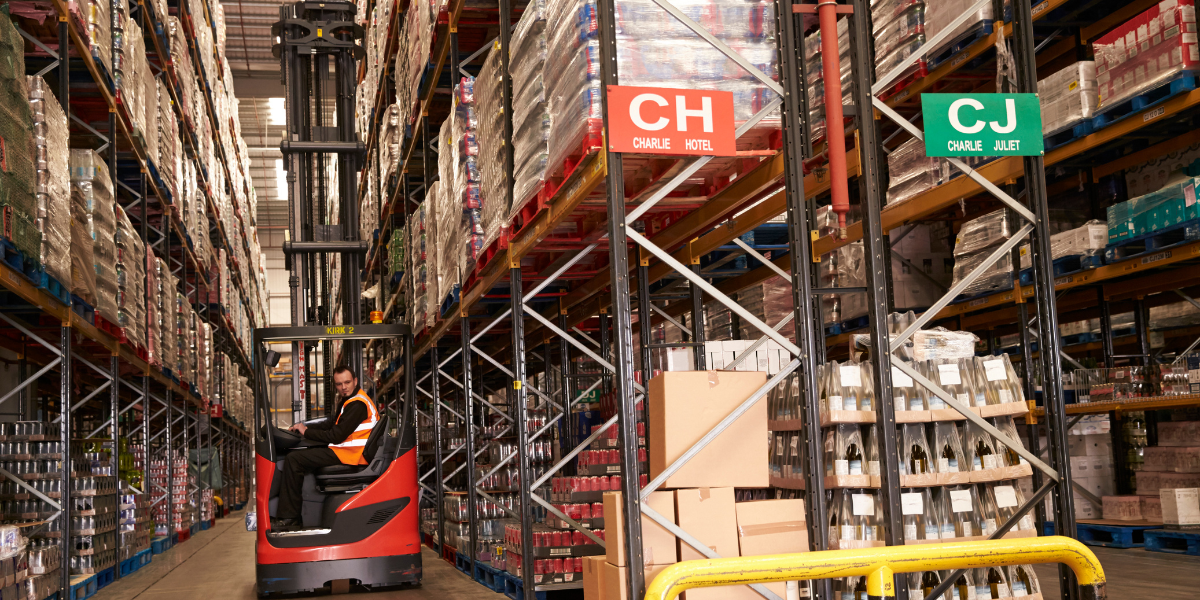
How to Operate a Reach Truck
Reach trucks are a type of Class II forklift specially designed to operate in tight areas of high-shelf stacks that would otherwise be too tight for a traditional forklift.
These machines can play an essential role within a warehousing and fulfillment fleet. But only if they’re operated safely and with confidence. And operators must undergo rigorous safety training to prevent injuries and property damage.
Need help with that?
This guide will review some of the basic guidelines for how to operate a reach truck.
Step 1: Start with Training
Every single piece of heavy machinery represents a potential safety hazard.
In inexperienced hands, a forklift could wreak havoc in seconds, exposing your business to significant liability risk. Because of this, you must ensure that every forklift operator is first trained and authorized to use the reach truck.
Remember, there are various makes and models of reach trucks—each one has slightly different controls and operating characteristics. Therefore, new operators should receive hands-on training to handle the specific machine they’ll be assigned to. This includes:
- Reading the operator’s manual
- Learning all material handling controls
- Mastering all the driving controls
- Reviewing the machine’s data plate
- Practicing driving, loading, and unloading procedures
Step 2: Practice a Stacking Sequence
In practice, a reach truck operates similarly to a counterbalance forklift truck. However, there are some key differences to consider, such as fork height.
While there are dozens of forklift sequences an operator must master, the most fundamental operational workflow involves stacking pallets. For that, follow these steps:
- Bring the mast and fork to the level position – Counterbalanced trucks tend to have more forward and rear tilt than reach trucks. So, it’s ideal for a reach truck’s weight to be level without any forward tilt. Having even a slight tilt might make it difficult if not impossible to stack a tall load in tight racking.
- Lift the load to desired height – Elevate the load to align with the height of the stack. As you do, be wary of jutting or overhanging obstacles.
- Drive towards the stack – Maneuver the forklift towards the stack. As you approach, visually confirm that the load will fit on the racking and that the truck legs come up just short of the racking, approximately 6 inches away. Re-apply the handbrake after you’ve reached this position.
- Reach the mast out – Reach the mast out so that the load is evenly stacked on the racking. Carefully lower the load onto the racking. Double-check that the forks are clear and level.
- Retract the mast – Once the load is down, fully retract the mast to prevent potential tip-overs.
- Reverse away from the stack – Carefully reverse away from the racking. Stop when the forks are half a foot away from the stack and apply the handbrake.
- Lower the forks – Lower the forks to be just above floor level and then apply rear tilt. This position is ideal for driving.
Step 3: Park the Truck
Whenever you park the truck, even for just a second, operators must take the following actions:
- Lower the forks
- Place the truck in neutral
- Set the parking brake
If the truck is to be left unattended, the operator should also shut off the truck and remove the key.
American Training Resources recommends that you never park the truck in non-approved areas, including:
- Areas with sloped surfaces
- In front of stairways
- Along an exit
- Near emergency equipment
Value Forklifts—Reach Trucks Galore
Reach trucks can be a valuable asset within your warehousing fleet. However, this machinery can be dangerous if not properly used.
As a business owner, it’s essential that your drivers are trained to operate their vehicles safely and effectively. Furthermore, you must invest in reliable, high-quality machines.
At Value Forklifts, we have dozens of high-quality, low-cost reach trucks available from the most popular brands, including Raymond, Yale, Hyster, and Crown. Whatever your operational needs or budget may be, we have the perfect machine for you.
Check out our catalog today!

Fantastic beat ! I would like to apprentice while you amend your web site, how could i subscribe for a blog site? The account helped me a acceptable deal. I had been a little bit acquainted of this your broadcast offered bright clear concept
Very well-written and funny! For more information, visit: DISCOVER HERE. Looking forward to everyone’s opinions!